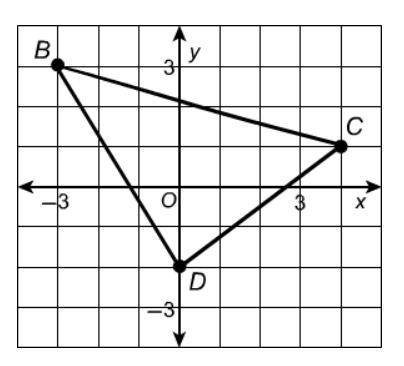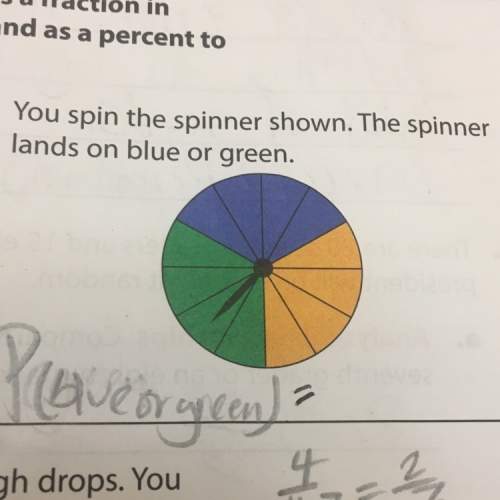
Mathematics, 20.11.2020 16:20 10040816
Use △BCD in the figure shown.
SELECT ALL the sequences of reflections that produce an image equivalent to the image r(180°, O)(△BCD).
Group of answer choices
(Rx-axis ⚬ Ry-axis)(△BCD)
(Ry-axis ⚬ Ry-axis)(△BCD)
(Ry = x ⚬ Ry = −x)(△BCD)
(Rx-axis ⚬ Rx-axis)(△BCD)
(Ry-axis ⚬ Rx-axis)(△BCD)


Answers: 3


Other questions on the subject: Mathematics

Mathematics, 21.06.2019 16:00, 710jonathan
Solve for x -2.3(r - 1.2 ) = -9.66 enter you answer as decimal.
Answers: 1

Mathematics, 21.06.2019 18:00, phillipsk5480
Express in the simplest form: (x^2+9x+14/x^2-49) / (3x+6/x^2+x-56)
Answers: 3

Mathematics, 21.06.2019 20:00, JOEFRESH10
The table shows the age and finish time of ten runners in a half marathon. identify the outlier in this data set. drag into the table the ordered pair of the outlier and a reason why that point is an outlier.
Answers: 1

Mathematics, 21.06.2019 23:30, ashiteru123
The average daily maximum temperature for laura’s hometown can be modeled by the function f(x)=4.5sin(πx/6)+11.8 , where f(x) is the temperature in °c and x is the month. x = 0 corresponds to january. what is the average daily maximum temperature in may? round to the nearest tenth of a degree if needed. use 3.14 for π .
Answers: 1
You know the right answer?
Use △BCD in the figure shown.
SELECT ALL the sequences of reflections that produce an image equival...
Questions in other subjects:

Mathematics, 08.02.2021 04:30

Physics, 08.02.2021 04:30


Mathematics, 08.02.2021 04:30


Mathematics, 08.02.2021 04:30




Mathematics, 08.02.2021 04:30




